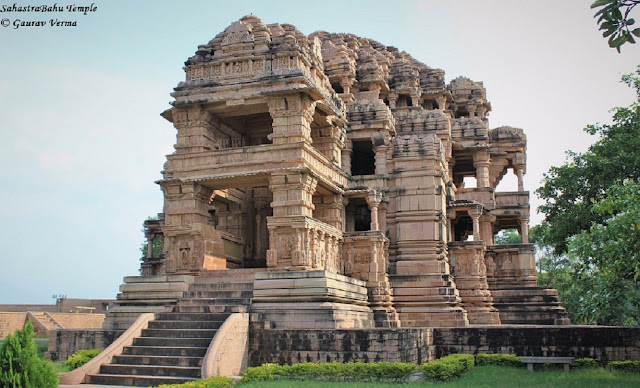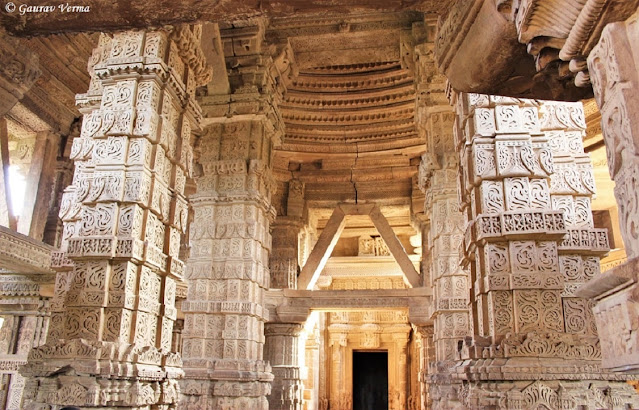The temple has 3 stories, however going beyond
first floor is not allowed. But you may see people managing to go on 1st
floor only to be scolded by guards of the temple.
But still, Why the name Saas-bahu temple? After some time, son of King Mahipala got married and her wife was a devotee of Lord Shiva. So, one more temple was built in the same premises to let daughter-in-law worship Lord Shiva. However, this temple was smaller in size, looks like an extrapolated smaller version of the Sahastrabahu temple, but again a spectacular display of architecture and carvings. Perfect symmetry of the octagonal ceiling is astonishing.
Once you are inside the temple the Ramayana inspired intricate carvings will leave you spellbound.
Now
there were 2 temples in the premises, bigger one for mother-in-law (Saas in
local language) and smaller one for the daughter-in-law (Bahu in local
language), In due course of time the temple started to get referenced as Saas-Bahu
temple. Sculpture work on these 2 temples is almost close to perfection.
While moving inside the temples it is difficult to ignore the damaged statues and carvings.
Part of temple is still in ruins, due to the repeated
attacks by the invaders. Withstanding so many invasions and repeated destruction, the temple
is still a shining example of Indian architectural brilliance.
Just imagine the fascinating image of temple at its peak. Do not forget to click the Gwalior Fort from the temple window or from the premises.
You will come out feeling pride on our heritage and
architectural acumen of ancient times. This is not all, just 1 km. from this
temple in another wonderful spot, a colossus Teli Ka Mandir in Gwalior Fort.
Keep exploring Folks.









